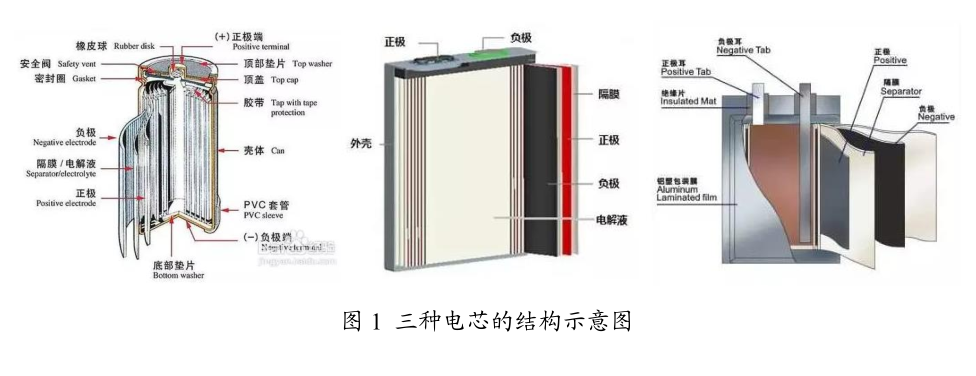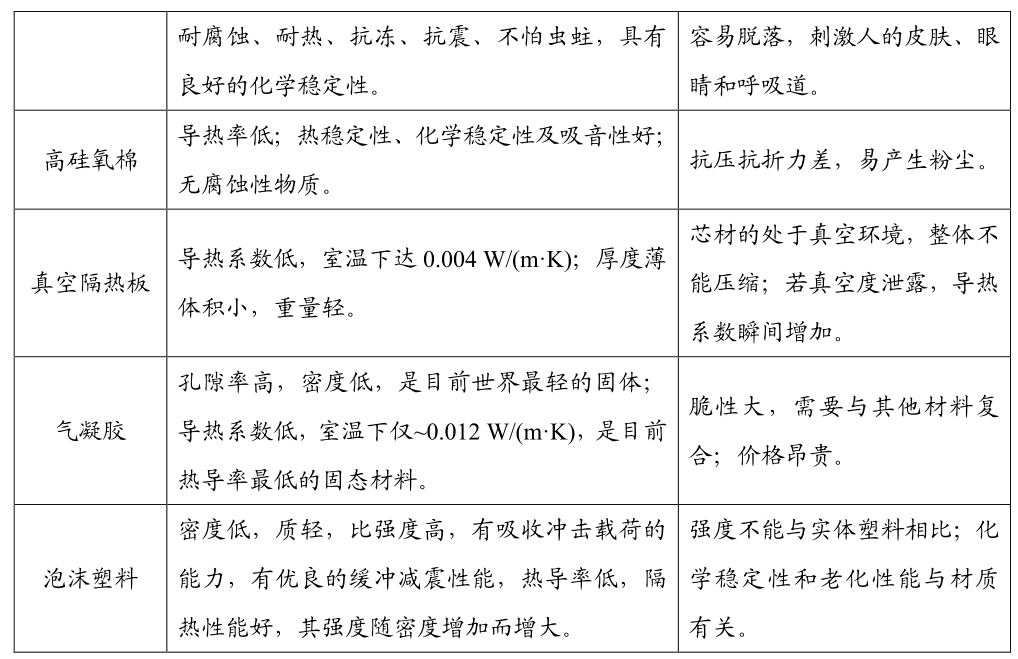Research
2019-05-14
4396abstract
With the increase in sales of new energy vehicles, fire incidents have also gradually increased. In order to comply with the requirements of national safety regulations for new energy vehicles and the market's demand for lightweight, high-power, and safe batteries, it is necessary to minimize passenger casualties, improve the safety of battery packs, and reduce thermal runaway of battery packs. At present, the problem of thermal runaway propagation in battery packs is mainly solved through thermal protection technology, which involves placing insulation layers between battery cells.
key word:
New energy vehicles; Battery cell; Thermal insulation design
1、 Introduction to individual battery cells in battery packs
A battery cell refers to a single electrochemical cell containing positive and negative electrodes, which is generally not used directly. Different from batteries that contain protective circuits and casings, they can be used directly.
At present, the mainstream packaging of lithium battery cells is divided into three types: cylindrical cells, square cells (also known as aluminum shell cells), and soft pack cells (also known as polymer cells). Their structural diagrams are shown in Figure 1. In battery pack design, individual cells are arranged in an orderly manner to form a module.

2、 The necessity and difference of heat dissipation and insulation between battery cells
Due to its inherent internal resistance, a single battery cell generates a certain amount of heat while outputting electrical energy, causing its temperature to increase. When its temperature exceeds its normal operating temperature range, it will affect the performance and lifespan of the battery. When the maximum temperature of the battery cell exceeds 60 ℃, there is a potential safety issue caused by overheating. The ideal operating temperature range for lithium battery cells is 20-45 ℃. It can be said that among all the cells in a battery pack, the hottest cell determines the safety of the entire battery pack, the coldest cell determines the performance of the entire battery pack, and the maximum temperature difference between a cell and a cell in the battery pack determines the lifespan of the entire battery pack. In order to improve the safety and long-term performance of the battery pack, the thermal management system in the battery pack must ensure that the temperature of any cell in the battery pack should not exceed the maximum allowable working temperature, and the maximum temperature difference between all cells in the battery pack and each cell should not exceed 5 ℃. Therefore, in order to ensure that the temperature between the battery cells meets the above requirements, there must be a good heat dissipation device between the battery cells. The heat dissipation between battery cells is usually achieved through the coolant in the heat sink.
The energy storage part and energy conversion part of the battery pack exist in the same space, which can easily cause chain reactions such as overheating, needle puncture, and collision, resulting in thermal runaway accidents such as smoking, fire, and even explosion. Thermal runaway is the most serious safety accident of power batteries, directly threatening the life safety of users. In recent years, the problem of thermal runaway propagation in battery packs has mainly been solved through thermal protection technology. In addition to thermal protection between battery cells, battery modules, and between the battery box and passenger compartment, thermal protection should also be installed to increase the thermal resistance of thermal runaway cells to transfer heat to other battery systems, thereby hindering the spread of thermal runaway. At present, research on thermal runaway in power battery systems mainly focuses on the safety issues of thermal runaway triggered by individual battery cells and then transmitted to the entire battery pack. This is because when a single battery cell experiences thermal runaway, it will generate a sudden increase in heat, and the heat dissipation will be much smaller than the heat generation, resulting in heat transfer to surrounding batteries, which will quickly cause large-scale thermal runaway of surrounding batteries and pose a safety hazard. Or in other words, the thermal runaway of individual cells is the source of thermal runaway of the entire battery pack, so we mainly discuss the thermal protection between cells. Thermal protection between battery cells is achieved by adding insulation layers between cells to prevent thermal runaway from spreading from individual cells to surrounding cells, reducing damage to the battery pack and its associated destructive effects.
3、 Thermal insulation design between battery cells
3.1 Design of insulation method between battery cells
For the heat dissipation problem between battery cells, some patents have proposed different design solutions. Tesla's published patent, US 7820319 B2, designs a thermal barrier between battery cells. Apply one or more layers of insulating expansion material to the outer shell, double-layer outer shell, or inner shell of the battery cell. This material can absorb heat and expand or become coke like, used to prevent the diffusion of heat. The available expansion materials include graphite based expansion materials, thermoplastic elastomers, ceramic based foam materials, vermiculite/mineral fiber based foam materials, and ammonium polyphosphate based foam materials. Zee. Aero proposed a thermal protection measure in patent US 8993145 B2, which involves setting insulation layers between square battery cells to block heat transfer from uncontrolled cells to adjacent cells. At the same time, the insulation layer is not completely closed, leaving convection channels between cells, which is beneficial for the heat generated by uncontrolled cells to dissipate throughout the battery pack and avoid local overheating.
Although the above-mentioned patent achieves the purpose of blocking thermal runaway through a thermal insulation layer, the addition of the insulation layer can easily lead to a decrease in the heat dissipation performance between the battery cells, making it difficult for general cooling systems to meet the heat dissipation needs.
The literature (Applied Thermal Engineering, 2016, 106: 131-140) proposes a composite panel thermal management system that combines thermal protection and heat dissipation. The composite panel is composed of phase change materials and insulation panels, and the heat dissipation performance of the battery pack under normal working conditions is analyzed. Taking the 10 ℃ working condition as an example, the heat dissipation and insulation performance of the composite panel are analyzed. The drawback is that in order to achieve heat dissipation, the thickness of the composite board is 10 mm, and the heat absorbed by the phase change material is not easily released, which affects the cooling effect.
In order to address the aforementioned shortcomings, some studies have arranged insulation panels and heat pipe groups in a staggered manner between individual battery cells. The results have shown that this approach not only greatly enhances the heat dissipation capacity of the battery pack and the uniformity of temperature between individual cells, but also effectively blocks the propagation of thermal runaway. The Volt battery management system of General Motors is an improvement based on the above model. In the design of the battery pack, metal heat sinks (with a thickness of 1 mm) are set between the Volt individual cells as a heat pipe group, and capillary structures are left on the heat sinks to allow the coolant to flow inside the capillary tubes and take away heat, achieving the purpose of heat dissipation; The insulation scheme adopts the method of placing foam between battery cells.
3.2 Selection of insulation materials between battery cells
The insulation material between individual cells, as a thermal protection material that can effectively delay or block the propagation of thermal runaway from individual cells to the entire battery system, must meet the following conditions:
1. Flame retardant (up to V0 level)
2. Resistant to aging and chemically stable;
3. Not producing toxic gases;
4. Good elasticity, low thermal conductivity, waterproof, moisture-proof, and vibration resistant;
5. Light weight, low price, thin thickness
At present, the commonly used thermal insulation materials include foamed plastic, ultra-fine glass wool, high silica cotton, vacuum insulation board, aerogel, etc. The advantages and disadvantages of various thermal insulation materials are shown in Table 2:

In combination with the above selection conditions of thermal insulation materials and the advantages and disadvantages of common thermal insulation materials, the flame retardant, specific material and soft foam materials (i.e. foam) fully meet the above requirements, because:
1. Foam has low hardness and high rebound properties, which can absorb the swelling stress of batteries and act as a buffer;
2. When the battery cell experiences thermal runaway, foam can provide insulation, suppress heat diffusion, and delay the occurrence of accidents;
3. When a battery cell catches fire, the flame retardant effect of foam can delay the spread of the fire and increase the escape time;
4. Foam has excellent resilience and a wide compression ratio, making it suitable for positioning.
Since the service life of the lithium-ion battery is 5-8 years, when selecting the thermal insulation material between the individual cells, the service life must be longer than the service life of the battery. Therefore, we can choose foam silicone rubber as the thermal insulation material between the individual cells.
3.3 foam silicone rubber
Foam silicone rubber is a flexible, porous polymer elastic material made of silicone rubber after foaming, which is a new polymer material combining the characteristics of silicone rubber and foam materials. Foam silicone rubber material has good thermal stability, insulation, heat insulation, seismic resistance, high temperature impact resistance and other properties, especially good seismic resistance at high frequencies, good aging resistance, service life>10 years, and can be used as sandwich filling material.
TS series foam silicone rubber produced by Dongguan Guangmai Electronic Technology Co., Ltd. adopts liquid foaming technology, with a thermal conductivity of 0.09~0.14 W/(m · K). It has excellent resilience and long-term stability. The long-term repeated compression resilience is well maintained. It is an ideal choice for thermal insulation gaskets between single cells. See Table 3 for specific performance parameters. As the filling material between the electric cores, foam silicone rubber has the flexibility to absorb the expansion and contraction of the electric cores; Its repeated compression rebound force can provide long-lasting elastic support for the battery cell; Its lower thermal conductivity can prevent thermal runaway from spreading to surrounding cells. At the same time, this material meets the fire rating of UL94 V-0 and HF-1, which can delay the spread of fire when the battery cell loses control and catches fire.

4. Conclusion
The design and selection of insulation methods and materials between battery cells play an important role in preventing thermal runaway of individual cells and improving the safety of battery packs. At present, the development and application of new materials, such as phase change materials (PCM), absorb heat through phase change to maintain temperature, increasing the selection of insulation materials for battery cells. The selection of insulation materials needs to balance safety and cost investment, and the specific application plan needs to be evaluated through simulation results.
Original submission website: http://www.evpartner.com/news/4/detail-39724.html
Recommend